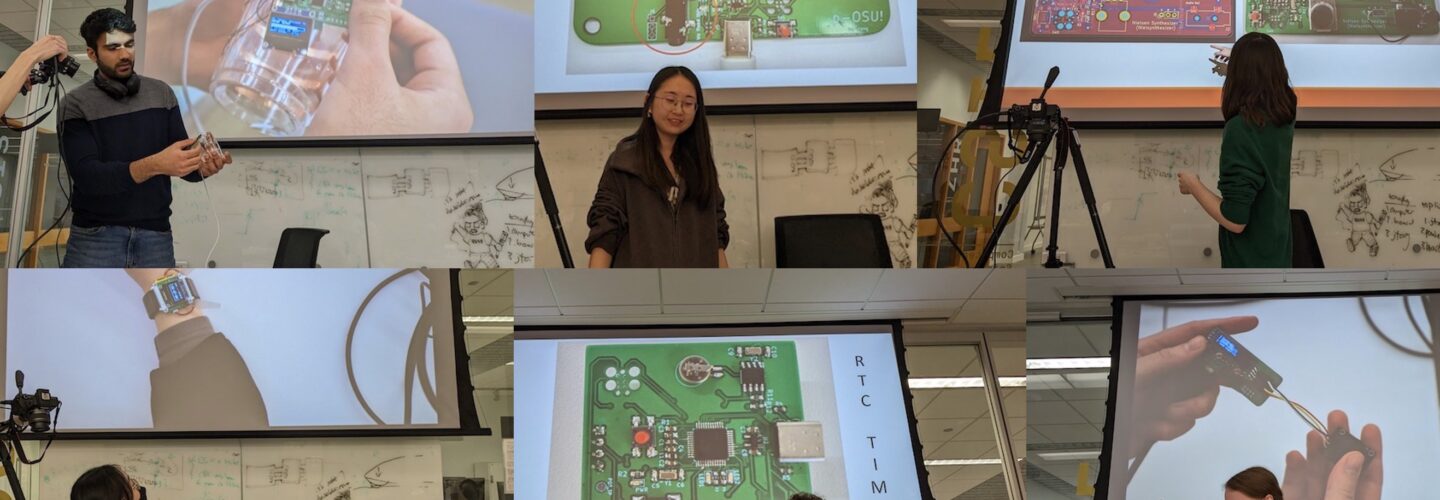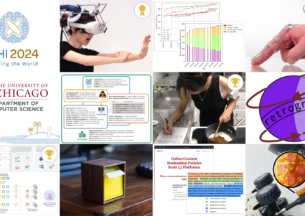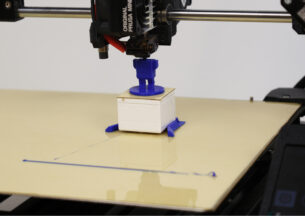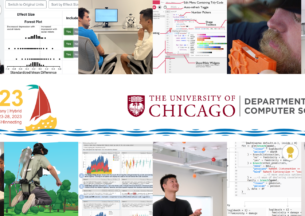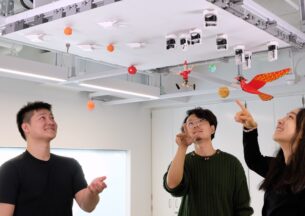Computer Science Class Shows Students How To Successfully Create Circuit Boards Without Engineering Experience
When computer science students were given the challenge of creating a circuit directly on printed circuit boards in eight weeks, not only did they exceed expectations, but they did it without any previous engineering experience. The University of Chicago’s Department of Computer Science does not sit within an engineering department like other schools. In fact, the vast majority of students has never sat in an electronics course at all, making this an odds-defying feat for students. At the end of the eight weeks, Assistant Professor Pedro Lopes was in awe when he saw projects like wearable to-do lists, alarm systems, smartwatches controlled by gestures, and complete game consoles that rivaled the engineering of Nintendo’s new console.
In Lopes’ course, Engineering Interactive Electronics onto Printed Circuit Boards, students are asked to engineer their own printed circuit boards from the ground up, by: designing it, engineering it, send it off to manufacturing, soldering the electronics onto it, and, then, debugging it and improving it. Most students in engineering courses don’t do this full process until their final years, and, certainly, not in only eight weeks. However, this fun jump into the deep-end of the pool enables students to get comfortable with self-learning, leaving them feeling empowered.
 “I loved that the class was very project based, and we learn by doing,” said second-year undergrad Lilith Yu. “For example, I was surprised that we were tasked to design our own PCBs during the first week of the class. Although that was very challenging, it was extremely fun and rewarding. I especially loved the amount of freedom we had with our final projects, the discussions we had about e-waste, and the TA, Shan-Yuan Teng’s energy and support!”
“I loved that the class was very project based, and we learn by doing,” said second-year undergrad Lilith Yu. “For example, I was surprised that we were tasked to design our own PCBs during the first week of the class. Although that was very challenging, it was extremely fun and rewarding. I especially loved the amount of freedom we had with our final projects, the discussions we had about e-waste, and the TA, Shan-Yuan Teng’s energy and support!”
Yu created a touchless and button-less smartwatch that the user navigates by wrist gestures. The watch uses an inertial measurement unit (IMU) to track the orientation of the user’s wrist. Flicking the wrist downwards will control apps on the watch and cycle between pages. Staying true to Yu’s creative side, she even added ears.
Each student had the ability to get creative within the bounds of circuit physics. Most assignments and projects allowed for a wide variety of solutions that were all correct, which enabled everyone to optimize solutions and finish them in a way that made sense individually. Students were also taught alternative ways to solve problems so they could apply them differently in later projects.
Although the course is hands-on design and building, Lopes made sure students were left with a deeper understanding of the engineering process.
 “While I had some experience with electronics and robotics, I had to learn more minute details that would help me construct these circuits and boards on a much smaller scale,” said third-year PhD student, Emma Peterson. “There is a unique tangibility to this class, but rather than simply building the circuits, we learned the theory behind building them as well.”
“While I had some experience with electronics and robotics, I had to learn more minute details that would help me construct these circuits and boards on a much smaller scale,” said third-year PhD student, Emma Peterson. “There is a unique tangibility to this class, but rather than simply building the circuits, we learned the theory behind building them as well.”
Peterson built a wearable to-do list to help her stay on track throughout the day without having to be distracted by her phone. It’s small enough to be worn on the wrist or used as a keychain.
“I often write things down and then forget where I’ve written them, or I forget to do it on time, so I figured I would make a device to help with that,” Peterson said. “I connected an accelerometer and a temperature sensor as well, so I could have reminders to get up and move, or compare the current temperature to outdoor weather to know if I need a jacket. The display allowed me to customize a to-do list at home, upload it to the device, and then check things off throughout the day as I accomplished them, complete with haptic feedback and reminders!”
 This last semester was the first time the course had been taught in person. Previously, Lopes taught it entirely remote due to the COVID-19 pandemic. It is offered during the winter semester and does not have any hard prerequisites to enroll. To learn more about the course or additional projects that were made, you can visit the website here.
This last semester was the first time the course had been taught in person. Previously, Lopes taught it entirely remote due to the COVID-19 pandemic. It is offered during the winter semester and does not have any hard prerequisites to enroll. To learn more about the course or additional projects that were made, you can visit the website here.


